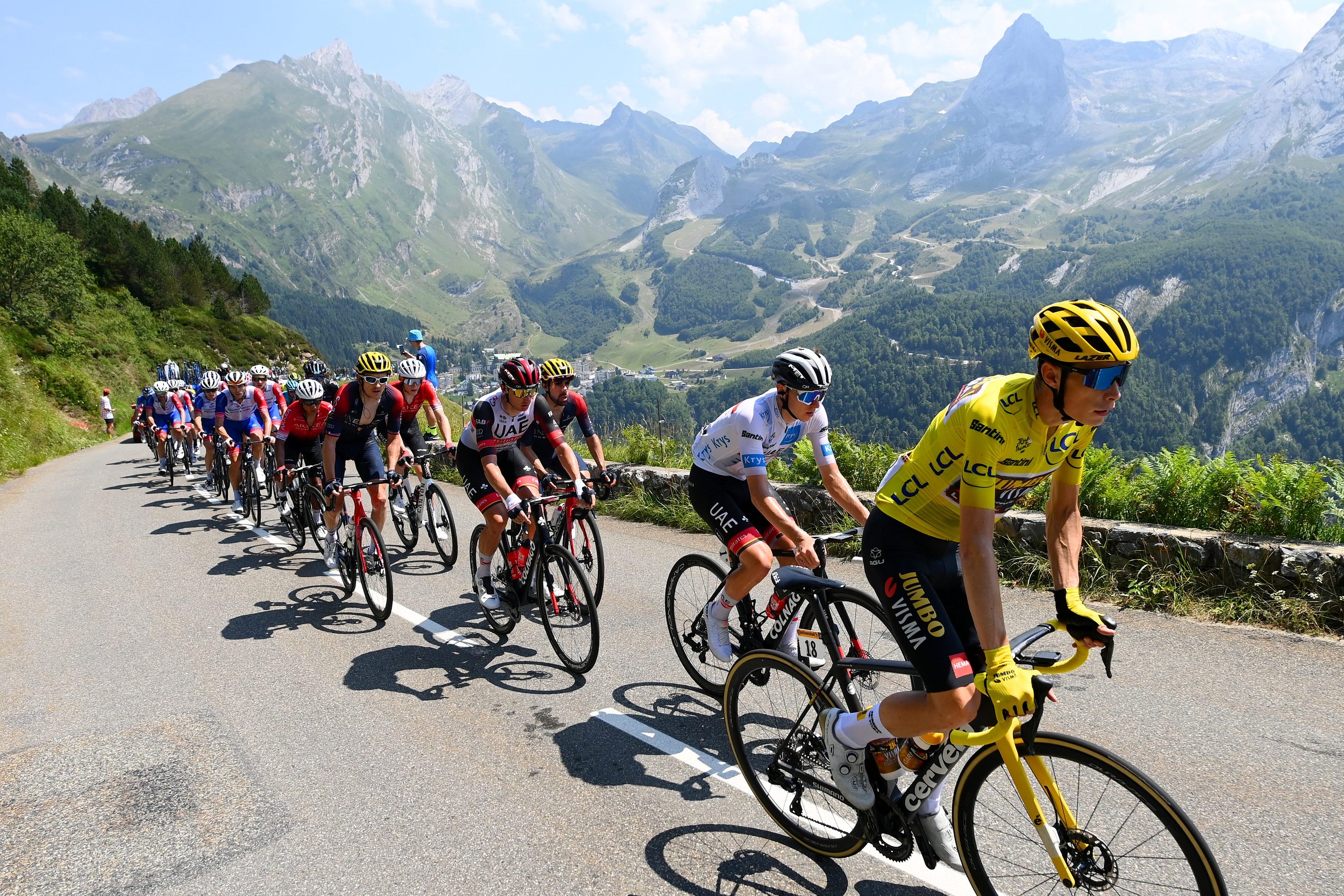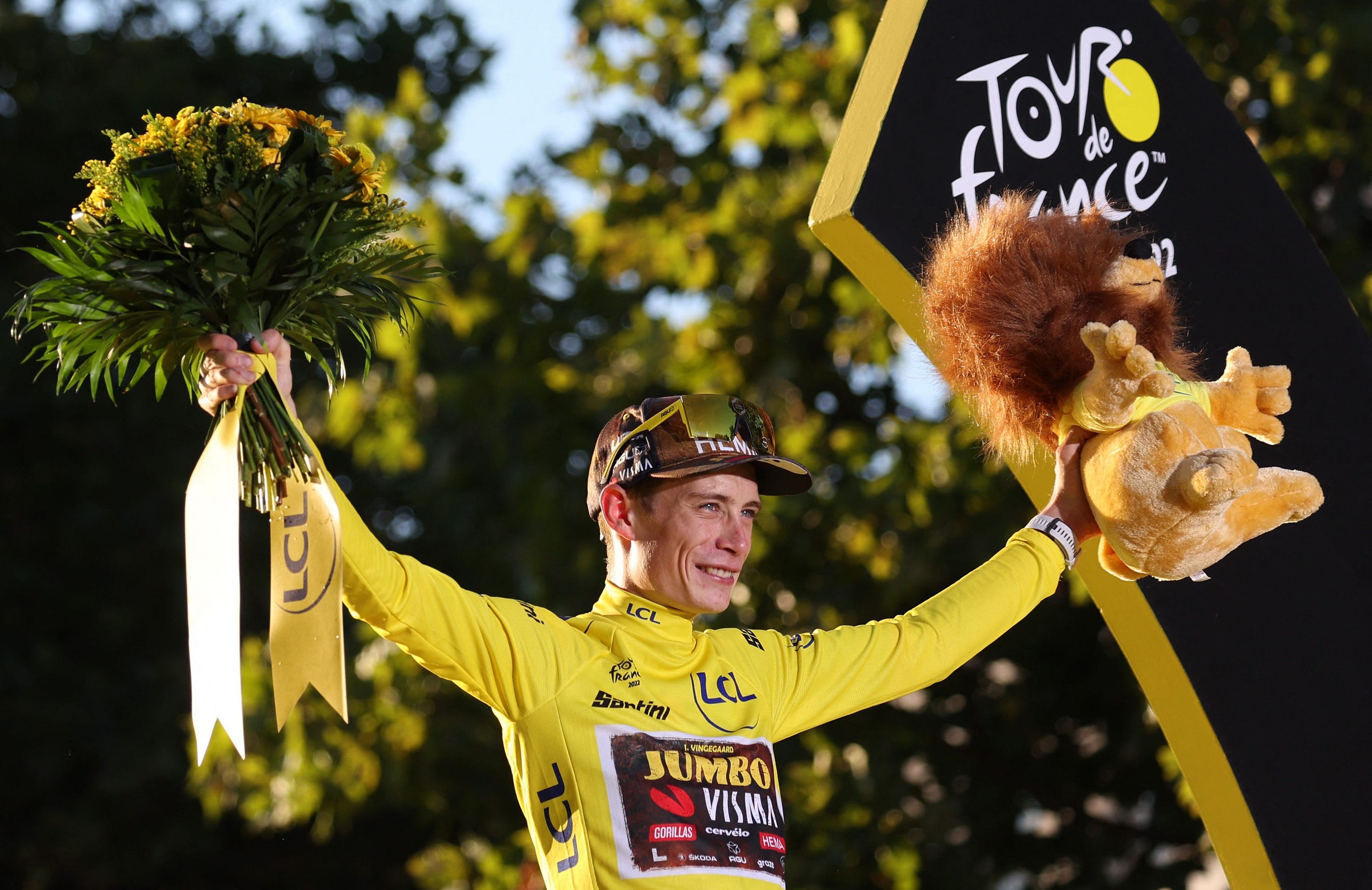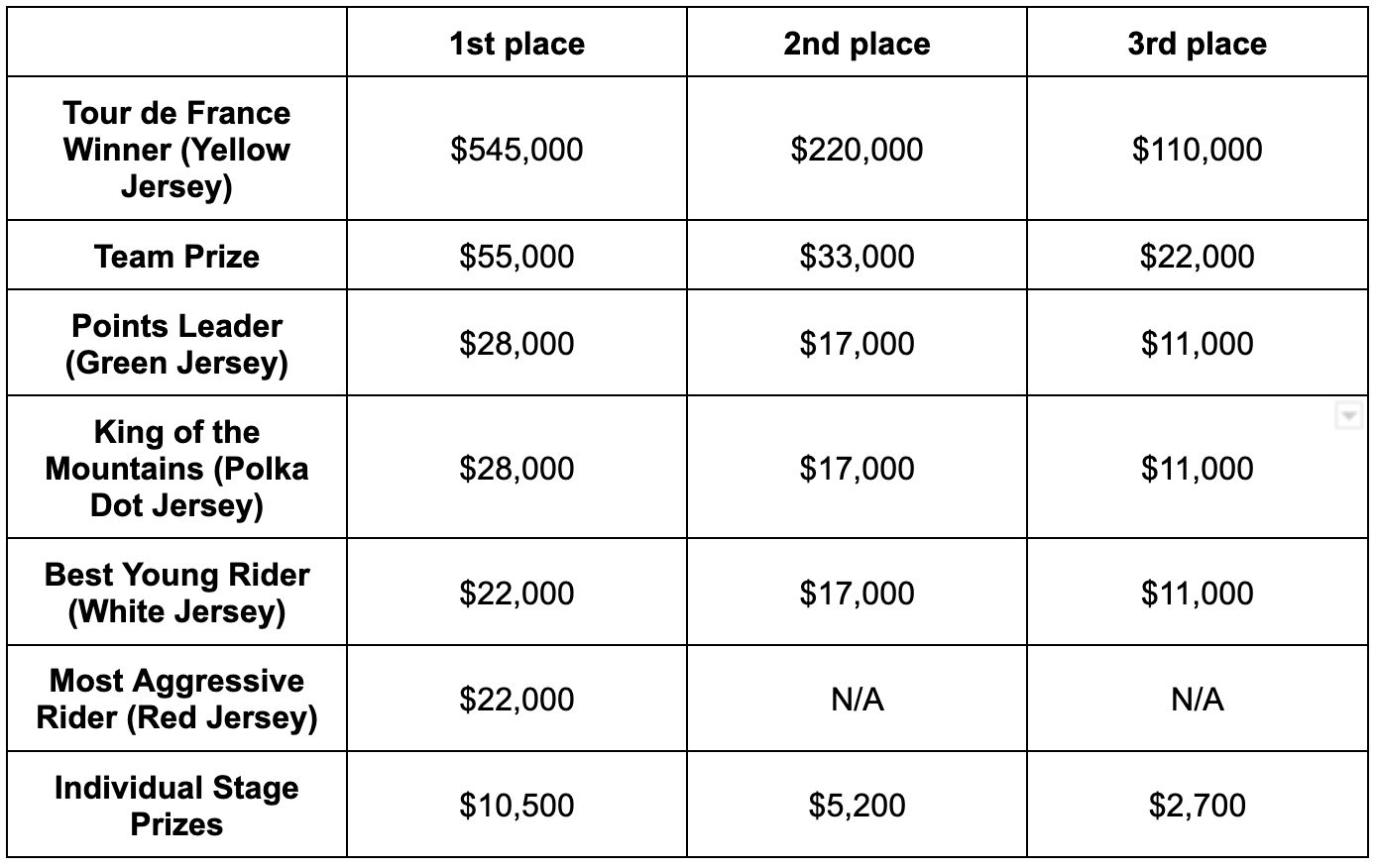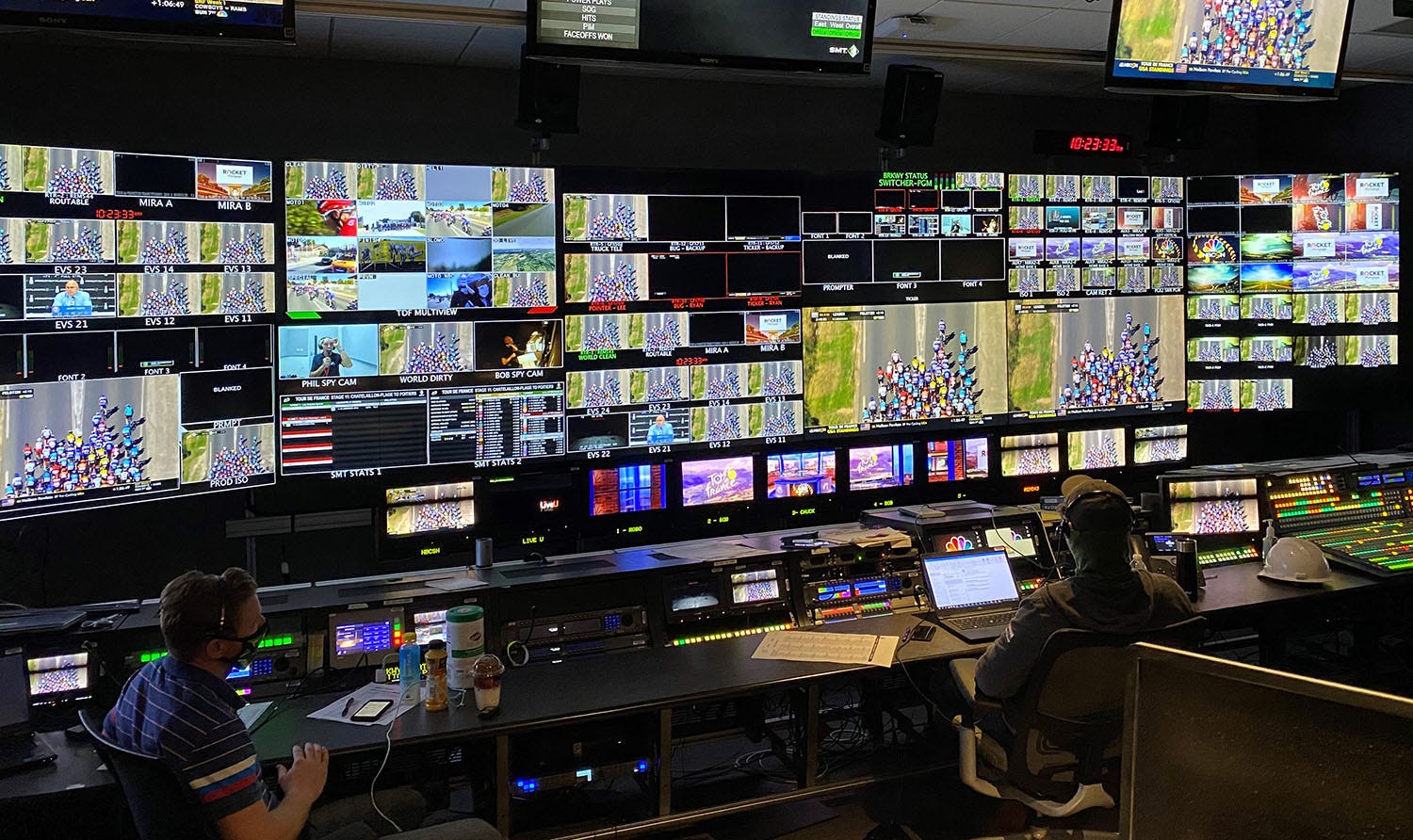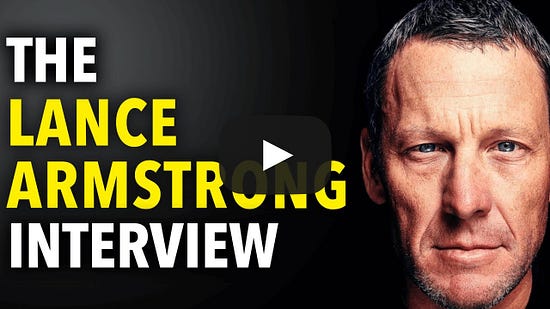Tour de France: How The World’s Most Challenging Race Became A $100 Million Business
Huddle Up is a 3x weekly newsletter that breaks down the business and money behind sports. If you are not already a subscriber, sign up and join 100,000+ others who receive it directly in their inbox each week. Today At A Glance:The Tour de France is one of the world’s most challenging sporting events. Millions of fans descend on smaller French towns to watch individual stages, and 176 cyclists compete at their absolute limit for three straight weeks. So today’s newsletter covers everything you need to know, from the race’s 100+ year history and layout, to the millions in prize money and sponsorships that each cyclist and team collect. This newsletter is also available via podcast on Apple or Spotify. Enjoy! This Newsletter is Sponsored By OKX!OKX, the most trusted crypto exchange platform, has launched the OKX Collective — a unique metaverse environment in partnership with Manchester City. This interactive environment allows you to interact with player avatars like Jack Grealish, Ruben Dias, Ilkay Gundogan, and Alex Greenwood. Fans will be able to gain exclusive access to unique experiences offered by OKX in partnership with Manchester City, including content, experiences, and all kinds of rewards like matchday tickets, 22/23 training gear, and even the chance to watch the team train in person. So click the link below and start enjoying this game-changing experience today. Check out OKX Collective Today Friends, The Tour de France is one of the world’s most challenging sporting events. That’s because 176 cyclists on 22 teams of eight cover a race course extending 3,500 kilometers — roughly the distance between New York City and Salt Lake City. These athletes will cycle nearly every day for more than three consecutive weeks, climbing mountains, hills, and cobblestone streets. And they’ll spend more than 4,800 minutes (more than three full days!) in the saddle, reaching top speeds up to 60+ mph. Tour de France cyclists who complete all 21 stages will burn more than 120,000 calories during the race. That’s the calorie equivalent of eating 1,625 apples, 872 slices of cheese pizza from Pizza Hut, 252 McDonald’s double cheeseburgers, or 619 original glazed Krispy Kreme doughnuts (aka, it’s a ridiculous amount of calories!). But more importantly, the Tour de France has also become an enormous business. Take the crowds, for instance. Millions of people will line the streets, from Bilbao, Spain, to Paris, France, to see the world’s best cyclists compete for a $2.8 million purse. And the teams stand to benefit, too. The average cycling team derives roughly 70% of its budget from sponsors, and a good performance in the Tour de France can all but guarantee a team millions of dollars in sponsorship revenue for the following year. So here’s everything you need to know about the money and business behind cycling’s most famous race: The Tour de France. How The Tour de France StartedThis year is the 110th running of the Tour de France — but I bet you didn’t know that the race actually started as a sales gimmick. The story goes like this: French newspaper L’Auto was on the verge of shutting down at the turn of the 20th century, so the company’s leadership team asked its writers to come up with ideas to boost circulation, and 26-year-old sports writer Géo Lefèvre suggested hosting the biggest cycling race in French history. Then, in 1903, the Tour de France launched and was a smash hit. L’Auto’s circulation increased 160% from 25,000 to 65,000 newspapers delivered daily in the event’s first year. And their circulation eventually increased by 340% over the next 30 years. The race was then shut down from 1940 to 1946 because of World War II. And with L’Auto getting taken over by a pro-Nazi German group during the war, the Tour de France’s ownership was given to the French newspaper L’Equipe. But even with the race growing each year, L’Equipe wasn’t making any money on the event. So they decided to sell it in 1965 to a privately-run French sports organizer named Amaury Sport Organisation (ASO), and ASO has run it ever since. The Prize Money Keeps Getting Bigger And BiggerThe Tour de France is one of the world’s most lucrative cycling events. This year’s 176-rider field will split a $2.8 million purse, including $545,000 for first place, $220,000 for second place, and $110,000 for third place. Tour de France Individual Prize Money
And while only one person can win the $545,000 first place prize, there are still many other ways to win money throughout the 3-week-long competition. For example, the King of the Mountains (Polka Dot Jersey) will take home $28,000. The best young rider and the most aggressive rider will take home $22,000. And the teams themselves can win between $55,000 and $22,000 for a podium finish in Paris. Ps. It’s customary for the Yellow Jersey winner to share the top prize of $545,000 with team riders and staff, as they play a significant role in helping them win. Tour de France Business BreakdownThe Tour de France primarily makes money in three ways: 1) Broadcast rights (55%), 2) Advertising & sponsorship (40%), and 3) City hosting fees (5%). Now, ASO is notoriously very private when it comes to its finances. But it’s estimated that the Tour de France brings in $75 million to $180 million in annual revenue. And with a rumored ~20% profit margin, the event is making at least $15 million in profit. Here’s a quick breakdown of each revenue-generating category.
The Tour de France is available on television in more than 200 countries globally. This enables ASO to collect millions of dollars in fees from networks like France Télévisions ($25 million), NBC ($8 million), Eurovision Sport, and ESPN. This is unique because most cycling broadcasts traditionally lose money — it costs NBC $2 million just to broadcast the event. But ASO has turned it into a money-making endeavor because 150 million people in Europe watch the race each year.
The Tour de France also has a robust advertising and partnership business. These sponsors are split into different categories — main partners are 1st tier, and official partners are 2nd tier. And companies like LCL (Yellow Jersey) and Skoda (Green Jersey) pay $12 million and $4 million for official jersey sponsorship. The publicity caravan is another major component of the Tour de France’s advertising and sponsorship business. This is a parade of brand partners that put together creative riding displays and hand out promotional gifts like event swag and food. The publicity caravan takes place before each stage of the Tour de France, and 47% of Tour de France fans go to the race primarily to see the publicity caravan. These brands will spend $17,000 (one car with your decals) to $1 million (multiple vehicles, multiple workers, millions of items to hand out) on the publicity caravan. And more than 15 million items will be handed out to fans over three weeks. Tour de France Publicity Caravan By The Numbers In total, the publicity caravan generates several million dollars in revenue for ASO.
City host fees for the Tour de France are the event’s smallest revenue generator, but they still command high prices from cities looking to be a part of the Tour. These fees range from $65,000 on the low end to more than $5 million on the high end. Tour de France City Host Fees
Cities are willing to pay this because fans can attend the event for free, which brings millions of tourists into town. Take last year’s grand départ in Denmark, for example. They claim those three days generated an economic impact of $108 million, with 722,000 international and domestic tourists and 1.6 million fans in attendance. But generally speaking, host cities expect to make back 3x to 6x their investment. The Business Of Professional Cycling TeamsThe economics behind a professional cycling team are pretty fascinating. The average Tour de France team derives most of its annual budget (70%) from its title sponsor. They pay their riders between $45,000 (minimum salary) and $6 million (2x Tour de France winner Tadej Pogačar). And the lower-end teams might spend $10 million annually, while the higher-end teams spend more than $50 million annually. Here’s a look at the top 5 highest spending teams from 2021:
Now, bigger budgets greatly impact winning, with 9 of the last 10 Tour de France champions dating back to 2013 coming from teams within the top four budgets. So many lower-budget teams have argued that a cost cap needs to be introduced — similar to what we have seen in Formula 1 over the last 2-3 years. Conversation Starters: Want to impress your family and friends during the 2023 Tour de France? I got you. Below you’ll find some of the race’s most interesting facts.
And as for the favorites, your best bet is Denmark’s Jonas Vingegaard or Slovenia’s Tadej Pogačar. Vingegaard won last year, and Pogačar won the two races before that. If you enjoyed this breakdown, please consider sharing it with your friends. My team and I work hard to consistently create quality content, and every new subscriber helps. I hope everyone has a great weekend. We’ll talk on Monday. Listen to the Joe Pomp Show on Apple or Spotify. Interested in advertising with Huddle Up? Email me. Your feedback helps me improve Huddle Up. How did you like today’s post? Loved | Great | Good | Meh | Bad Lance Armstrong: The rise, fall, and redemption of a cycling legendIf you’re feeling the energy and want more cycling-related content, check out this interview I did with Lance Armstrong last year. It’s the most popular episode of the podcast ever — and Lance is super open and honest about his wins *and* losses. Huddle Up is a 3x weekly newsletter that breaks down the business and money behind sports. If you are not already a subscriber, sign up and join 100,000+ others who receive it directly in their inbox each week.
© 2023 |


